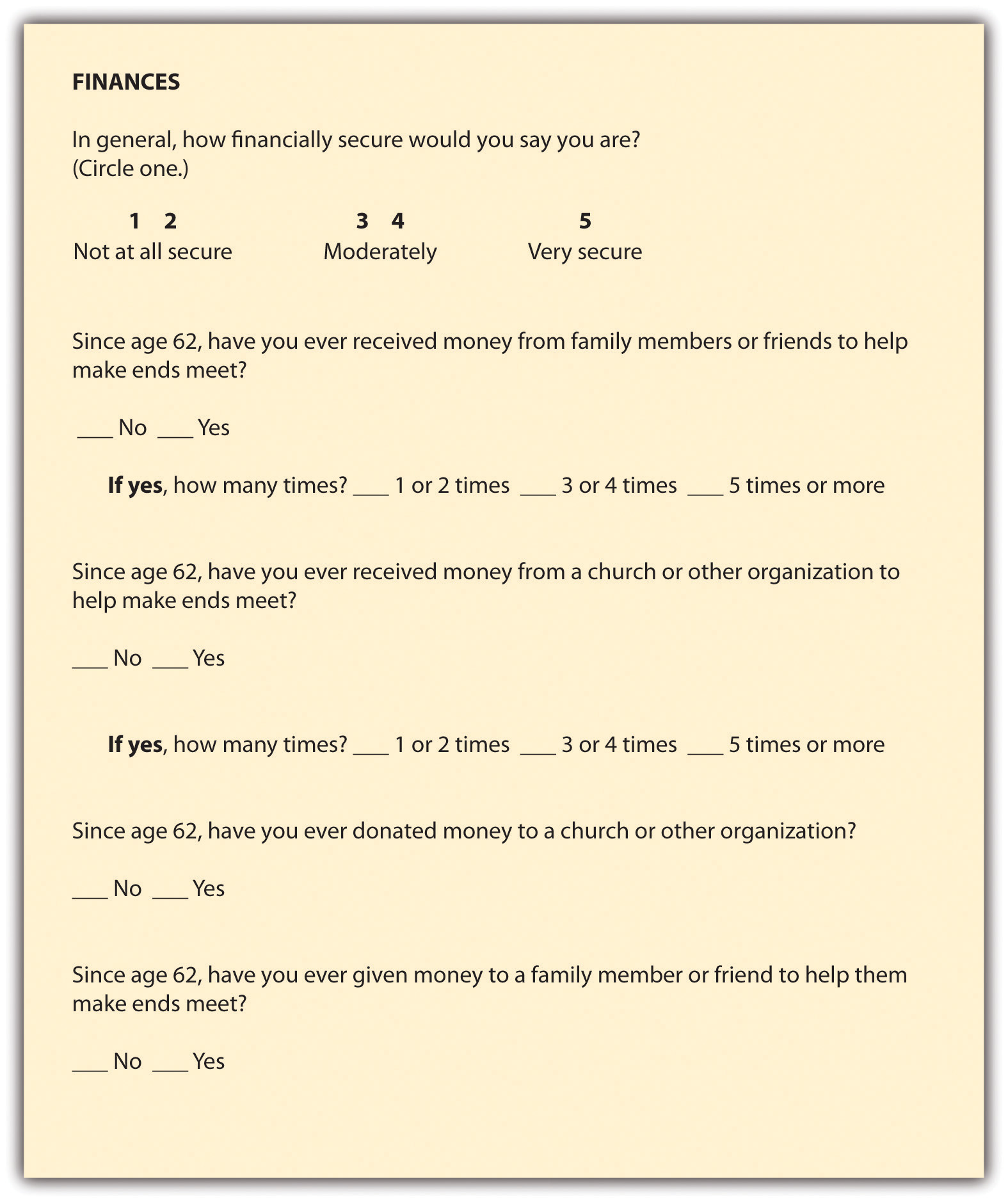Indexes and Scales
An index is a type of measure that contains several indicators and is used to summarize some more general concept. The Gallup poll on well-being uses an index to measure well-being. Rather than ask respondents how well they think they are, Gallup has designed an index that includes multiple indicators of the more general concept of well-being (www.gallup.com/poll/123215/Ga...ays-Index.aspx).
Like an index, a scale is also a composite measure. But unlike indexes, scales are designed in a way that accounts for the possibility that different items on an index may vary in intensity. Take the Gallup well-being poll as an example and think about Gallup’s six dimensions of well-being: physical health, emotional health, work environment, life evaluation, healthy behaviors, and access to basic necessities. Is it possible that one of these dimensions is a more important contributor to overall well-being than the others? For example, it seems odd that a person who lacks access to basic necessities would rank equally in well-being to someone who has access to basic necessities but doesn’t regularly engage in healthy behaviors such as exercise. If we agree that this is the case, we may opt to give “access to basic necessities” greater weight in our overall measure of well-being than we give to “healthy behaviors,” and if we do so, we will have created a scale.
Let’s consider another example. Sexual harassment is a concept for which there exist indexes, and scales.
A sexual harassment index would use multiple items to measure the singular concept of sexual harassment. For example, you might ask research participants if they have ever experienced any of the following in the workplace: offensive sexual joking, exposure to offensive materials, unwanted touching, sexual threats, or sexual assault. These five indicators all have something to do with workplace sexual harassment. On their own, some of the more benign indicators, such as joking, might not be considered harassment (unless severe or pervasive), but collectively, the experience of these behaviors might add up to an overall experience of sexual harassment. The index allows the researcher in this case to better understand what shape a respondent’s harassment experience takes. If the researcher had only asked whether a respondent had ever experienced sexual harassment at work, she wouldn’t know what sorts of behaviors actually made up that respondent’s experience. Further, if the researcher decides to rank order the various behaviors that make up sexual harassment, perhaps weighting sexual assault more heavily than joking, then she will have created a scale rather than an index.
Let’s take a look at one more specific example of an index. In a recent study that I conducted of older workers, I wanted to understand how a worker’s sense of financial security might shape whether they leave or stay in positions where they feel underappreciated or harassed. Rather than ask a single question, I created an index to measure financial security. That index can be found in Figure 5.1 On their own, none of the questions in the index is likely to provide as accurate a representation of financial security as the collection of all the questions together.
Figure 5.1 Example of an Index Measuring Financial Security

In sum, indexes and scales are tools that researchers use to condense large amounts of information, to simplify complex concepts, and most generally, to make sense of the concepts that they study.
KEY TAKEAWAY
- Indexes and scales allow us to account for and simplify some of the complexities in our measures.



